David Billingsley's Blog
August 13, 2021
The Confession (Review)
 Great start, poor ending…
Great start, poor ending…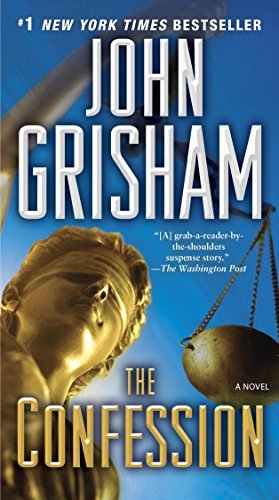
This book is a legal thriller by the master of the genre, John Grisham. He has published numerous bestsellers, several of which were turned into movies. He’s published roughly 30+ books (I believe most or all are legal thrillers). This book was published by Dell in 2010.
Verdict: Great start, but the ending is a mystery (not in a good way). The tale is a fictional treatise on capital punishment. Since Grisham’s treatment of the subject shows he does not favor capital punishment, readers with a different opinion on the subject may have a very tough time with the book in its entirety. The reason for a 3-star rating-the plot, mainly the last third of the story (more on that below).
What’s it about? As said, first and foremost, this is a book about capital punishment.
Donte Drummond, an African American ex-football star in a small northeast Texas town, has been wrongly arrested for the rape and murder of a popular high school cheerleader. After spending nine years on death row, Donte’s date with death is closing in. Around this time, Travis Boyette, who has been recently paroled in Kansas, shows up in the office of a Lutheran minister and confesses to the crime. Seems Travis has an inoperable brain tumor and will die soon, so he has decided to come clean with his story.
Much of tale from here deals with Donte’s legal team who are pulling out all the stops to at least delay Donte’s execution. The main question is whether this ex-con with a brain tumor can convince Donte’s legal team to believe him and then convince the authorities to either delay the execution or overturn the charges against Donte.
The Story (plot and character): The story is third person, mostly omniscient viewpoint. When Grisham does drop into different viewpoints, he uses a wide range of characters.
The pace and storytelling in the first 2/3rd of the book is superb. Great three-dimensional characters and an interesting plot. I found it to be a page-turner (which is not that common for me) as the story races toward the day Donte is to be taken to Huntsville to be executed. The question the reader wants answered: Will the combination of Travis Boyette’s confession and Donte’s legal team efforts thwart the state’s plan to execute an innocent man?
Then comes that last third of the book. The best way I can describe it is that the book actually ended when the question was answered (I don’t want to give it away!). The last 100+ pages was like a monstrously long epilogue. I kept waiting for something big (possibly surprising) to happen…it never did. IMO the climax occurred 2/3 of the way through the book, not close to the end as in most fiction of this type.
What’s good about the book? The writing is pure Grisham. Very entertaining. No foo-foo prose here. It’s legal thriller language and dialogue through and through. Again, it starts off with a bang. Rendition of small Texas town is well done too (I know this part of the world).
What was not so good? As stated, the last part of the book was a disappointment, no longer a page turner.
Bottom line: If you like Grisham’s books, you’ll enjoy the prose, the storytelling, etc., but you may be disappointed near the end. If you favor the death penalty, you won’t like this book. If you haven’t read Grisham, skip this one and read A Time to Kill and The Firm, both great books.
May 23, 2021
Jesus Land (Review)
 This isn’t for everyone…
This isn’t for everyone…
This book is a memoir published by Counterpoint and is the author’s first book. It made the NYT bestseller list. Her second book, A Thousand Lives: The Untold Story of Hope, Deception, and Survival at Jonestown was published in 2011.
Verdict: Maybe the toughest book for me to review so far. This will appeal to a certain progressive audience while it is NOT a book for many conservatives, especially if you are deeply religious or come from a traditional midwestern upbringing (or both). While the book was well-written and moves along at a great pace, it was hard for me to believe it was not filled with embellishment or outright fiction–OR maybe this is genuinely what the author saw through her own eyes. Maybe that’s the point – what happened to her IS unbelievable. The viewpoint is so dark (coming mostly from a child and teenager), you wonder what the “terrible people” in this book would say about her view of the story. It’s also not a PG-13 book; it deals with some tough subjects.
What’s it about? The two most clear-cut themes are abuse and racism in middle America in the 1980s.
It’s a memoir about the author’s childhood and teenage years in rural Indiana. She has an adopted brother, David, who is black (and another adopted brother, Jerome, who plays a lesser part). Her parents are fundamentalist Christians-her mother seems to want to be rid of her children, is mentally abusive, and unloving to say the least. The father’s main role is to pop-up and physically abuse his adopted black children; he’s not a beer-bellied drinker but a middle-class successful surgeon. (You have to wonder why these people adopted two black children and then abused them.)
A good part of the first half of the book takes place near Lafayette, Indiana, mostly at their home and school. These parents are clearly painted as the worst parents on earth. But again, you have to wonder, with the antics of Julia (a loner, sleeping with a boy who climbs in through the window, trouble at school, gets drunk up in her room, etc.), what the parent’s story would be. Maybe from their viewpoint, they were at their wit’s end and were desperate in dealing with her.
Anyway, about midway through the book, after chapters of abuse, racism, anti-religiosity, sadness, and almost complete negativism, the kids are sent (David first) to a religious institution in the Dominican Republic for wayward kids. The adults at this institution have no redeeming value to the author nor does the institution. It is seen in her eyes as incarceration – a prison she cannot escape where the adults are crazy religious nuts who try to brainwash or browbeat the kids into accepting Jesus. (Note: There was a film made in 2014 called Kidnapped for Christ about the school. Can’t comment on it, but plan to watch it some day.)
The Story (plot and character): The entire story is from Julia’s POV…it’s a memoir.
It’s starts a bit slow opening with a gang of racist white boys after David and Julia on their bikes. Sets the stage for what’s to come. Once you get into a few chapters, it moves along nicely, yet, it is raw, crude, and emotionally unsettling. The first part of the book is made up of varied (mostly bad) memories of Julia struggling with her parents, her friends (or lack of), school, boys, her other siblings, alcohol, etc.
The second part of the book takes place at a religious reform school in the Dominican Republic called Escuela Caribe. At first, Julia’s brother David is sent away to the school by her parents. Then Julia. She is excited to be reunited with David but quickly finds the school so suffocating, abusive, and prison-like that she rarely has a chance to truly interact with her brother.
To speak of plot in a memoir is a bit unfair given true life rarely works in the way a novel does. That said, many will find themselves wanting Julia to escape from her parents and small-town Indiana, wanting Julia (and David) to escape from the reform school, and wanting both to find their peace in their youthful dream of escaping to Florida together. As for characters, the personalities in this book are anything but flat. The bad people are clearly bad, the racism real, and the suffering genuine.
What’s good about the book? The writing is good, and though I wouldn’t consider it a page-turner, it kept me engaged from start to finish. Character development is excellent. Depending on your viewpoint, you’ll come to really hate the mother and father and especially the folks who run the reform school in the Dominican Republic. Julia comes off as a troubled pre-teen and teen that some readers may identify with. Again, you’ll either feel strongly for her or shake your head in disbelief. And finally, for those who can identify with the author in some way, the story should be incredibly cathartic. Raw, crude, and joyless, but cathartic.
What was not so good? As long as you buy-in to the story, you’ll find very little not to “like” about the book. If not, you may find yourself upset with the entire story. Either way, it should hit some emotional triggers in the reader that are cause for genuine discomfort.
Bottom line: Sorry to harp, but if you buy-in to the story and identify with it, you’ll rate this as a 5-star memoir. If you are deeply religious, you may hate this book and rate it as a 1- or 2-star effort. If you are in the middle, who knows. My rating is somewhere in the middle. I know there are two sides to every story; the author’s is well-told and emotionally jarring. But then again…
March 13, 2021
The Children’s Blizzard (Review)
 Four stars – a fast start, a long finish…
Four stars – a fast start, a long finish…
This book was published by Dell Publishing. The author writes mostly historical fiction, the story behind the story. Her novels, The Swans of Fifth Avenue and The Aviator’s Wife, were NYT, USA Today, and IndieBound bestsellers.
Verdict: A well-written piece of historical fiction that most readers will enjoy. It does a great job of immersing the reader in middle America (the Great Plains) with immigrant homesteaders during and following the blizzard of 1888. There were some pacing and plot issues for me but not enough to not recommend this book.
What’s it about? Out on the “godforesaken” plains, two young school teachers are about to dismiss their students for the day when a “terrifying” blizzard arrives without warning. The children are without their heavy coats due to the unusually mild conditions earlier in the day, and the school house is a good distance from their homes. Who wouldn’t want to know what happens next?
The story is mostly about Raina and Gerda Olsen, two teenage sisters, who are school teachers in different parts of the Dakota and Nebraska territories. Both are boarding with other homesteaders in order to have a job as a teacher. The book begins quickly with both having to make life and death decisions for themselves and their students when the surprise blizzard arrives. Should they keep the children inside the drafty and poorly constructed one room school houses with the chance of running low on wood for their stoves and freezing to death – or should they send the children home, hoping they won’t get lost in the white-out conditions. The decisions at this moment will impact the survivors for the rest of their lives.
Alas, this is also the story of 11-year-old Anette Pedersen, a servant girl, sold by her parents to an uncaring family (who also board Raina, one of the teachers). We follow Anette in her miraculous journey through the blizzard and in its aftermath. Her story is probably the most heart-wrenching in the novel.
And it is also the story of Gavin Woodson, a newspaperman from back East who spent the last few years writing highly embellished stories for state boosters and railroads interests to lure northern European immigrants to the “Garden of Eden,” the Nebraska Territory. His is a story of redemption for helping to bring these settlers to a “pitiless land,” and young Anette becomes his vehicle for that redemption.
The book is based on a real event and oral histories of survivors. The original storm was called the Schoolhouse Blizzard or the Children’s Blizzard because so many either perished or suffered great injury.
The Story (plot and character): The majority of the story is told in third person from various POVs including the teachers Raina and Gerda, newspaperman Gavin Woodson, and the very young servant girl Anette Pedersen.
The book starts off with a bang. After a few introductory chapters to set the stage and introduce the characters, the blizzard arrives in the book almost as it is described in real life – a fast, early surprise for the reader! And the plot and pace race through the blizzard as the characters make tough decisions, suffer greatly, and directly face the blizzard’s peril. The author does an excellent job of allowing the reader to see the world through these characters. Their emotions, actions and reactions, and the impact of the social and physical environment on their lives are well done. The characters are brilliantly developed with all the warts and beauty of what you see in real life. The fathers are not all heroes, the mothers are not the protectors of all, and the children have more than simple minds.
But then there is the second half of the book. How do you sustain such a story in the aftermath? In a typical tale, we’d build up to the blizzard, and it would likely be the climax. Yet much of this story occurs in the aftermath. We obviously want to know what happens to these main characters (and others). Yet the book almost seems like two stories: the fast-paced, blizzard followed by a drawn-out this-is-what-happened-to-these-folks story. The first half occurs mostly in a matter of hours (days if you include some of the first few introductory chapters) while the second half occurs over years. That cut into my rating a bit but it’s not a huge issue.
What’s good about the book? The writing is wonderful – her style of fictional prose seems just right, balancing the plainness of the language and environment of the day with descriptive narrative that places you in the story. In short, it’s not too plain and not too flowery.
The setting and plot are nicely woven together. Though the story is historical fiction, the author succeeds in her own stated desire to tell the story behind the story. There’s just enough historical background to help the reader learn about the period and the associated challenges while keeping to the heart of the story. And a blizzard in the heart of America in the 1800s is of great personal interest to me.
Characters are well developed, and such as in real life, have all the flaws and goodness we readers can identify with. Though I didn’t closely identify with any one particular character, I think some readers will.
What was not so good? As stated above, it felt like two books in one. There were also a few places in the second half of the book where the plot lagged or jumped around a bit. Some readers have stated that the number of characters was an issue; it was not for me.
There were also a few spots where the characters seem to act out of period, like they had today’s beliefs and culture. Still not real bothersome….it IS fiction.
Bottom line: This is a good read. It gives the reader the fictional opportunity of experiencing the tough life of the homesteaders of the 1880s while throwing in a blizzard to boot. I recommend it.
December 1, 2020
Girls of Brackenhill (Review)

Three stars – an unfinished thriller…
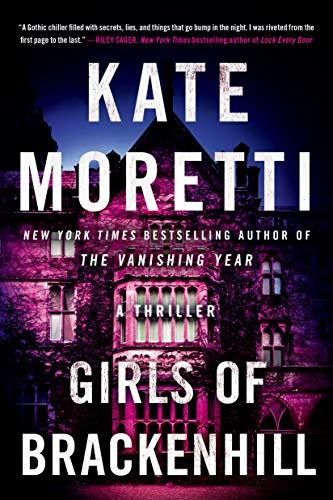
This book was published by Thomas & Mercer. The author is an NYT bestselling author of six novels and a novella.
Verdict: Maybe. The book is fairly well-paced, spooky at times, and full of twists and turns. Yet, most who didn’t like it were dissatisfied with the last 1/4 of the book. I’m right there…if the last quarter were written as well as the first three-quarters, this would be a four…possibly five-star novel.
What’s it about? The story starts with a killing some eighteen years prior. You don’t know much else other than a person killed a girl out in the woods. Move head to 2019. Hannah Maloney, the protagonist, must return to her Aunt’s castle in the Catskills after her aunt is killed in a car accident. This is the first time Hannah has been back to the castle in 17 years. Her Aunt Fae and Uncle Stuart, the owners of the creepy castle, are the perfect eccentrics living aloof from the nearby town. Turns out Hannah and her sister Julia spent summers at the castle in their youth. In the present, Hannah is “destined to start a new life” back in Virginia with Huck, her fiancé, and Rink, the dog. It’s not clear what starting a new life means because we have no idea what she had been doing for the last 17 years since her youthful forays to the castle. Anyway, we know Julia disappeared one summer at Brackenhill (the castle, a perfect name!), and Hannah never returned after that summer. Predictably, when Hannah goes back to the castle after her aunt has passed, she begins to question the events of the summer when Julia disappeared.
And ah…a human bone is found near the estate. Of course, it must be Julia, so Hannah becomes obsessed with reliving her past and finding out what happened to her sister.
Without going into more detail, there’s the spooky castle, the bone, the eccentric owners of the castle, and a nearby town whose residents are certain evil things have been going on in Brackenhill. Sounds like a great start to a thriller…and it is!
The Story (plot and character): The majority of the story is told in third person from Hannah’s POV, though it switches somewhat randomly between the past and the present. This all seems to work fine. Moretti crams a whopping 64 chapters into 330 pages. I actually prefer short chapters in a thriller, so no big deal there. The setting is well down. You can imagine the spooky, creepy castle surrounded by dense, dark woods, well away from the rest of the rational world. There’s mysterious noises, creaks, and rooms inside which amplify the setting. The pace is good. It does fall into a bit of “telling” at times, almost pure narration, especially scenes from Hannah’s past – but nothing to interrupt the flow much. Hannah, as the central character, is clearly not a reliable narrator – in other words, just because she is telling the story doesn’t mean everything she remembers actually happened that way. Unfortunately, many of the other characters fell flat to me (e.g., Huck, her fiance…he seems more like a prop…someone to talk to but serves no other purpose). Alice (you’ll find out who she is later) could have been better developed too. But Hannah is the star here.
Now, everything I said above is 100% true in the first 75% of the book. The other 25%? Read on.
What’s good about the book? The writing was easy and straightforward. The author’s ability to setup the setting was particularly good. There are many twists and turns, some red herrings, and a number of subplots (that’s also a not-so-good). The reader is clearly drawn into the story. Is this a ghost story? A murder mystery? Thriller? Psychological thriller? Bizarre coming of age story? Maybe a bit of all of them.
The pace was about right.
And the question for Hannah is clear: What happened some 17-18 years ago to her sister, Julia? In other words, you know where the book is (should be) going.
Oh, and it was free from Amazon as part of their First Reads program.
What was not so good? There were far too many loose ends that were not tied up (for most readers). The majority of readers want closure. IMO, this book does not give you that. Yet the vagueness of the ending may make it enjoyable to some.
Hannah’s character (or any of the others) were never really likeable. That can be okay (nobody likes Hannibal Lecter), but there needs to be some connection with the reader…and honestly, I had a hard time connecting with her (or anyone else in the story). At times, she seemed as immature at age 28 as she did at 15.
As I mentioned above, there were a ton of subplots in this book. Personally I’d have removed half of them and tightened up the main plot.
The ending. Most readers who did not review the book with high ratings almost always pointed to the ending as being an issue. It was almost as if the book were either rushed to be finished, not clearly thought out, or meant to be open-ended. There are so many open questions at the end…
Bottom line: If you want an easy read and a well-paced mystery/thriller that feels a bit like a ghost story AND you don’t mind a fuzzy ending, then go for it! If you want closure after putting a book down and want loose ends tied up, this is not your story. I’m on the fence on this one.
October 29, 2020
Even As We Breathe (Review)

Four stars – a human story…
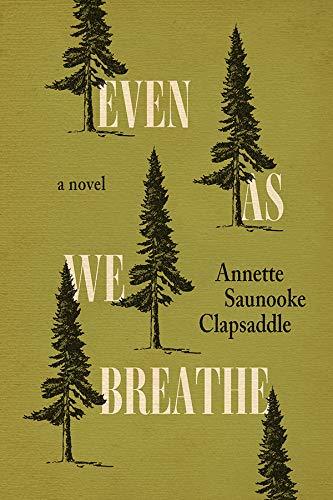
This book was published by Fireside Industries Books, University of Kentucky. The author is an enrolled member of the Eastern Band of Cherokee Indians and a graduate of both Yale University and the College of William and Mary. This is her debut novel.
Verdict: Buy it! Read it! This is an easy, well-paced read from an excellent storyteller set in a place that will widen your horizons and make you feel. That’s what reading is about, right?
What’s it about? The story revolves around Cowney Sequoyah, a nineteen-year-old young man living on the reservation in Cherokee, North Carolina, with his grandmother Lishie and Uncle Bud. The setting is in the southern Appalachians during the summer of 1942 (WWII). Cowney has a disability and cannot serve in the war, so he is off to Asheville to work in the high class Grove Park Inn and Resort where Axis diplomats and their families are being kept as prisoners of war and guarded by U.S. troops. He feels this summer job will help him to escape the reservation, at least for a time. He strikes up a friendship with a young woman from Cherokee, who is also working at the hotel for the summer. The hotel (and a particular room) becomes his refuge from everything he has faced as a young man on the reservation. Yet the biases and prejudices return as he is accused of abduction and murder of a missing little girl.
The Story (plot and character): The entire story is told in first person through the eyes of Cowney, which makes it easy to to get caught up in his life, his problems, his view of the world, his story, his growth. There are some surprises, but that’s not the intent of this book. It’s written as a coming of age novel from a POV that I don’t possess. It’s a human story that could be told today in our era of struggle to be inclusive versus divisive. The story is also simple, easy to read. I don’t say this as a negative. The prose is about right for me. Too much flowery prose, while beautiful, can get in the way of good storytelling. That does not happen in this book.
What’s good about the book? The storytelling period. And it’s a viewpoint that is of great interest to me. It’s also easy to feel for Cowney as he deals with universal issues we all face (friendship, family, hostility, betrayal, discrimination, etc.). The story is engrossing and completely believable.
I loved the setting. Southern Appalachia brings images of dumb rednecks making moonshine (like the movie Deliverance). Don’t fuss, I was born in Alabama. Yet I’ve never been to Asheville, but I know it’s a beautiful part of the south. I got a good sense of place and the differences between living in Cherokee (which I imagined too as a beautiful place, but mostly poor from an economic standpoint). I also had no idea about keeping Axis enemy families prisoner in a place like the Grove Park Inn. The entire novel could have been at any other time, but putting it in this WWII-era was really a stroke of genius.
The ending. The author knows how to end a story. Hit it out of the park, IMO.
What was not so good? This section will be short. There were a few places/events that I thought would play a larger role in the book (e.g., the waterfall). That marginally got in the way of the flow. And it’s completely possible I missed the meaning. But blah blah blah, this is a really good story, so I’ll stop nitpicking.
Bottom line: If you want a fast-paced mystery or suspense, this is not the book for you. If you want a steamy romance, then no. If you want to see life from the eyes of a young man who faced great odds back in the 1940s and you love a good story, a human story, a storyteller’s story, this is your book.
October 5, 2020
One for the Blackbird, One for the Crow (Review)

Five stars for the beautiful prose, two for the lagging plot…
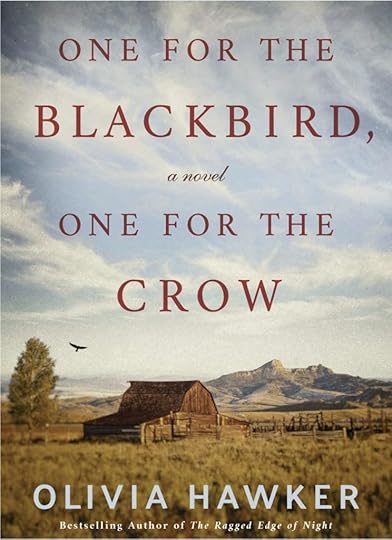
This book was published by Lake Union Publishing, an arm of Amazon. Olivia Hawker has an interest in genealogy and historical fiction. Her first book, The Ragged Edge of Night, and this one were both drawn from true stories in her family tree.
Verdict: It depends. If you love vivid prose, endless description and narrative, internal reflection, and more of a literary plot, then this is the book for you. If you want a fast-moving adventure (or even a moving adventure) set in the Wyoming plains with lots of “show-me” and crisp dialogue, this is NOT your book.
Recommend (barely) with the caveat above. If you love excellent prose and don’t mind repetition and a very slow plot, then you’ll probably like this book. Otherwise, skip it.
What’s it about? Two families living out on the plains of Wyoming in 1876 (I’m already interested), far from civilization. Cora, one of the wives, sneaks off (routinely) with the other woman’s husband, a man named Substance (yes, Substance). Cora and Substance are caught by Cora’s husband, and he shoots and kills Substance. Cora’s husband turns himself in and is jailed for two years, 20 miles away. Cora (the cheating wife), her daughter Beulah, and her two sons, must survive the winter next door to Nettie Mae, the wife of Substance (note Cora is responsible for Nettie Mae’s husband being shot). Nettie Mae has one son, Clyde, an older teenager, who is left to accomplish the work of two farms with the two fathers gone. The book is about what should be a rather complex relationship between the two families, especially the two women. And there is the burgeoning attraction of Beulah and Clyde to each other.
Great set-up for what could be an interesting story.

The story (the plot and characters): The story starts with a structural mistake (IMO). It alternates through four POVs, one per chapter. There’s Beulah, a pubescent, carefree and wandering soul, daughter of Cora (the cheating wife); Cora, a timid weak woman; Nettie Mae, a stoic survivor of a somewhat abusive husband (the slain one); and Clyde, teenage son of Nettie Mae. IMO, this alternation in POVs every chapter creates a significant amount of repetition and drags the plot down with it. Mid-to-late book, I began to wonder: (1) if anything of interest was going to occur, and (2) if the story would ever end.
The questions to be answered are: Will these two families survive the winter without the fathers? Will Nettie Mae and Cora accept each other or even become friends? What does the future hold for Beulah and Clyde? For Cora’s family? For Nettie Mae and Clyde? Somewhere in all the endless prose, internal dialogue, drawn-out narratives, and such is the answer to these questions. Problem is the pace at which the answers come. For most of the book, the four characters seemed to be loafing around talking about this or that in their head and accomplishing little.
What’s good about the book? The writing is VERY good. This author has a talent with words that is unmatched in most other books I have read. If you love literary fiction, this book is lyrical and written with elegance. That’s where it ends for me. Literary fiction is supposed to provide in-depth characterizations too. The four main characters are unique and moderately interesting, yet they sometimes respond in unexpected (unbelievable) ways (Clyde and the coyote).
The author certainly convinces the reader of her expertise regarding the landscape and the era. You could easily imagine the farms, nearby mountains, the river, the sod houses, etc..
What was not so good? The pace of the plot and the endless descriptive narratives. You are definitely being told (versus shown) the story ninety percent of the time. Hence, the reader is not drawn into the characters or the story as much. And did I mention the pace. This is a slooowww moving book.
The use of italics for Beulah’s chapters, page after page, became quite annoying from Chapter 1. Punchy, fresh dialogue and strong conflict were both mostly absent. For example, Nettie Mae naturally felt great pain and agitation around Cora (the woman who slept with Nettie Mae’s husband and subsequently was responsible for his death). But instead of making Cora a character worthy of a conflict, Cora seemed more a head-held low, timid, cowering person. Clyde, too, could have been much more. His reactions to what should be common events (killing or birth of an animal) on a farm in 1876 were sometimes ludicrous. Clyde had been working this remote farm with his father for years, eking out a hard existence. He came across as a kid suddenly thrown into dealing with the rough life on a farm in 1876.
What was bad? The slow pace and the endless description killed it for me. I finished the book, but my interest faded as it went along.
Bottom line: If you love beautifully written prose and aren’t too worried about the pace and the plot, go for it. If you want a story with strong conflict, great dialogue, action (at least some), and complex characters who react in a reasonable fashion, skip this one.
August 23, 2020
Masked Prey (Review)

Gives you exactly what you expect from a murder/thriller…

This book was published through Putnam. John Sandford is the pseudonym for Pulitzer Prize-winning journalist John Camp. Masked Prey is book 30 in the Prey Novel Series with protagonist Lucas Davenport as a U.S. Marshal (in this one). Note: This is my first Sandford book, but it stands on its own.
Verdict: This book delivers exactly what you’d expect for a murder/thriller; it moves along crisply, has simple in-your-face dialogue, and the plot is somewhat intricate. You sort of know where your headed in the book, but the path is interesting, realistic, and provides a few surprises along the way. Recommend with a caveat. There is a political bent in this novel where the alt-alt-right is clearly the “bad guys.” Those who lean far to the right, especially in how they feel about the government and gun control might want to skip this one. Most of the negative reviews that I’ve read were due to the political nature of the book.
What’s it about? The daughter of a U.S. Senator finds a picture of herself on a strange website alongside random pictures of other kids of influential politicians. The kids names appear alongside vicious political rants from radical very right-leaning groups. The question: Are extremists with deadly intent tracking the children of powerful politicians? Of course, the FBI is on it. Two senators call in Lucas Davenport, U.S. Marshal, someone who can operate outside of FBI constraints (no crime has been committed), to uncover the intent behind the website.

The story: Lucas Davenport is one of those unconventional, no nonsense law enforcement protagonists who will step out of bounds enough to ensure the job is done. Kind of reminds me of a modern-day Dirty Harry. We know from the beginning that he will get the job done; the pleasure is in following his path through the plot.
The questions that need to be solved are: Who built this odd but sloppy website? What will it be used for? Obviously, pictures of politicians’ kids walking to school or in the schoolyard…next to radical rants about the government doesn’t require much imagination to know what someone behind this might do. They clearly want to influence, challenge, or exact some kind of revenge. The fear is that the site will incite lone wolves to target the children. Lone wolves, in this case, are radicals who are acting on their own and have no direct affiliation with a group, which makes it all that more difficult to locate and stop them.
Marshal Davenport is joined by Bob and Rae, two other U.S. Marshals who specifically deal with “very bad people.” Dialogue and interaction of the three really helps the story move along. This allows Sandford to work Davenport through the scenes with someone to bounce his ideas off of. There are a number of potential bad guys/gals to cheer against and you know the identify of the main antagonist early on. So it’s not a matter of guessing “who did it…or will do it” but “how they will do it…and how they will be stopped.” Standard enjoyable thriller stuff. Sandford hits the mark.
What’s good about the book? There’s no deep meaning here. It’s a quick read of good guys versus bad guys. Crisp and direct dialogue, believable characters, engaging plot. And at the end, the good guys win, though Davenport comes through on his own terms. To give a fast feel to the book, Sandford dispenses with the typical “he said, she said” attributions using colons instead (e.g., Lucas: “Hey, hand me that…”). Probably is his style of writing.
My favorite line in the book: “…he might not actually be the devil himself, but they’re Facebook friends.”
What was not so good? Again, the political bent to the story will turn off a segment of readers. I have not read his other books, but reviewers claim this is his most political novel.
The story did seem to drag slightly in places. The last chapter could have been cut in half. We also seem to get too deep into unnecessary details of what Lucas is doing. Also Sandford’s character descriptions were rather mundane (e.g., “Rae was tall, at six feet, a black woman with close-cropped hair, dressed in dark gray slacks and a dark gray long-sleeved blouse…”). Most of the characters and other descriptions were like this, though if I’d read the entire series, I probably wouldn’t need or expect more. But please, no more “close-cropped hair.” That description seems to appear in every book.
But the above is nitpicking. This was a good book.
What was bad? Nothing.
Bottom line: It will deliver exactly what you expect from a murder/thriller with a tough/unorthodox lawman. Beware that it might hit you the wrong way, depending on your politics.
August 9, 2020
When We Believed in Mermaids (Review)

Great story idea!…but…

This book was published through Amazon’s publishing arm under the imprint of Lake Union Publishing. O’Neal is a bestselling author of women’s fiction books.
Verdict: Interesting enough to finish it. Mildly recommend as long as you don’t mind a little bit of sappiness and drifting around in a story that should do better to keep to it’s central theme.
What’s it about? Kit, an ER doctor in California, sees her sister Josie on the TV news from Auckland, New Zealand, where a club has caught fire. So? Her sister has been dead for fifteen years! (Great set-up to hook the reader.) Kit, emotionally torn from the sense of grief, loss, and anger, decides she must go to New Zealand and find/confront her sister. After arriving in New Zealand, Kit begins to live out her past (through flashbacks): days on the beach with her sister, surfing, a lost teenage boy unofficially adopted by the family, a father and mother with such a turbulent marriage that they ignore their children, and a “trauma that has haunted Kit and Josie their entire lives.” You also get to experience the same backstory from Josie as she lives a new life as Mari, fifteen years after she was supposedly killed in a terrorist bombing in Europe. Plenty to work with there.

The story: The obvious expected question of the tale is not whether Kit will find Josie but what happens when she does. We are all traveling the path to get to this climatic moment in the story, but the path to get there is kind of like driving down Lombard Street in San Francisco-lots of curves to get from one point to another.
The story is written in first person and in the present tense, e..g., “I eat my sandwich at the table…” vs. “I ate my sandwich at the table….” Each chapter rotates between Kit and Josie (whose name is now Mari in New Zealand) as the story weaves together their tumultuous past and fairly benign present. At first, it’s a bit easy to get confused, yet after a few switches and flashbacks, it flows well. The author likely chose the present tense due to the numerous flashbacks in the book (where she moves into past tense to subtly help the reader). It is also written with much flowery prose with a huge dose of adverb-induced descriptions of foods, atmosphere, ocean, weather, shops, Javier’s this and that…more on him soon. That will either play into the reader’s immersion or push away others…kind of a personal choice, i.e., either lovely, romantic, beautiful…or sappy maybe even cheesy at times, depending on your taste. Most of the time I enjoyed the style.
What’s good about the book? The flashbacks are better than the present-day story, IMO. The descriptions of their childhood including the interaction with their parents, their unique attraction/love of their adopted older brother, and some of the tragic and traumatic incidents they faced were all well done–more interesting than the present-day story to find Josie/Marie. In the flashbacks, the sisters come alive with realistic emotions and react as you might expect. For instance, it’s easy to believe Kit (in her present state) to be a loner who either works or surfs (alone). The backstory reveals abandonment and a form of abuse by her parents that support this. Josie’s abandonment by her parents pushes her toward a much different path, one of drug addiction and sexual promiscuity. Her current world is much more mainstream-maybe overcompensation for her past.
Without spoiling too much, the story shows how two sisters can overcome the difficulties of a dysfunctional family and environment…and survive or even grow later in their lives. In the end, it does include a healthy dose of forgiveness and redemption, leaving us with the satisfying ending most readers desire.
What was not so good? The story idea starts off with a bang. Once Kit gets to New Zealand, rather than marching forward to find her sister, she gets caught in a love affair with Javier, a rather cardboard character who says little but touches Kit in variously well-described ways. The relationship seems a sideshow (one of those curves on Lombard Street) to the overall novel and gets in the way in the first third of the book. Maybe it’s someone for Kit to interact with during the scenes where she would have been alone. Javier is a singer/guitarist star of some sort who only seems to have to perform if he wants to and is hanging around New Zealand for no apparent purpose other than to show up in scenes in this book.
Another distraction is an old house on an overlook that Mari’s husband (another uninteresting character) buys for her as a surprise. The house carries a secret related to a death/murder that happened long ago, one we are told about later in the story. There is also a great deal of time spent describing this house. The whole set-up has nothing to do with the main story. If it were left out, the main story would carry on without impact.
Where the backstory is good, the sisters and their life and decisions in the present is a little harder to buy. Kit, a loner and someone who trusts almost no one, suddenly decides to let a stranger (Javier) into her life as soon as she arrives in New Zealand. She should be out looking for her sister, who she hasn’t seen in 15 years. Maybe the author was showing some hesitancy to face her sister, but I didn’t read it that way. Either way, IMO, she should have really struggled to let her guard down, given her past and present life. Josie (Mari in the present), who has had a troubled past, lives a perfect life with a perfect family. Above I related that to overcompensating. Still…it’s really stretches the ends of the spectrum.
What was bad? Nothing.
Bottom line: The story was a quick read, had some notable weaknesses, but it was entertaining enough and immersed you in another place. You DO want to know what happens when the sisters finally meet. And the ending works.
July 28, 2020
#Writerslift: Engage or Promote?

First off, if you don’t know about #writerslift, it is a hashtag on Twitter that writers use to gain new followers or promote their writing (mostly books). On the good side, it does the above. On the bad side, it does the above.
I will admit to being one of those people who has acquired over 6K Twitter followers while following roughly the same number. There is a large crowd who will now go “Ugghh” and hurl virtual stones at me. Yet my early goal was to gain a significant number of followers. My current goal, because I admit to my errors, is to have a more interactive experience (engage) with like-minded writers, readers, and influencers.
So how did I get to 6K followers? Use of the #writerslift hashtag clearly gave me more new followers than any other method I tried. Of course, early on, I resorted to the tried and true beginning method: find fellow writers and follow them so they follow you back. Many find out a strange thing happens when you reach the 5K mark. Depending on the number of folks who follow you, Twitter may cap you at 5K. (Here’s a link to some rules about gaining followers on Twitter from the Twitter help center.)
I wasn’t capped at 5K. I had nearly as many followers as people I followed. Others who have been capped have resorted to unfollowing people they previously followed – another stoning infraction from the Twitter audience.
My experiment. I wanted to see what vigorous #writerslift participation would do for me. Over a 3-day period, I liked, retweeted, and replied to numerous #writerslift posts that other people tweeted. My reply was always a tweet with a link to purchase my latest book (that’s mostly how people reply to a #writerslift though you may see links to blogs and websites too). I was curious about three things:
How many people would click on the link to my book?How many new followers would I get?How many people would purchase my book?
Basically, exposure, audience-building, and sales might describe these three items. (For the last item, I stopped all advertising a week before my test to ensure I wasn’t getting sales from some other effort.)
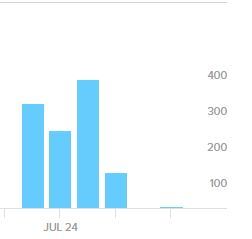
The results: The graph to the right is the number of folks that clicked on the link to my book. Phenomenal!!! Nearly a thousand clicks. Also, during this time, I gained hundreds of new followers. But the bottom line answer to “How many books would I sell?” Exactly ONE.
I’m a scientist in my day job, so I’m certain there are people out there ready to tell me how uncontrolled my experiment was. True. Maybe my book isn’t so good. Maybe the subject wasn’t enticing to the audience. Maybe people will buy it later. Maybe I sell zero books most of the time. Yes, it’s not the most careful experiment, but it was enlightening.
I do know from bitly and Twitter analytics that my 1st two results are fairly reliable (that a huge number of people clicked on the link and I gained hundreds of new followers). The latter is easy to see because in all my other engagement, besides randomly following many writers, I typically gain a few followers a day. I lose followers if I don’t remain active.
One note about the other participants in #writerslift tweets. They were much like me: writers selling their latest or bloggers promoting their site or something similar. I have nothing against them – I’m one of ’em. I don’t plan on going to the hashtag police and trying to stop people from using it in the future.
Where to go from here. From the standpoint of hawking your wares, Twitter, IMO, is not a great place to market a book. The exception is the announcement of a new book. That’s exciting and others are excited along with you. Twitter is far better for engagement of like-minded writers and your audience. I may continue throwing an occasional reply to a #writerslift, but I’ll spend much more time on finding useful content to tweet and interacting in a more intimate manner with writers, bloggers, influencers, and READERS!
A final caution: The above was a sample of ONE. Your mileage may vary.
July 21, 2020
Across the Winding River (Review)

Many like this book…just not me




